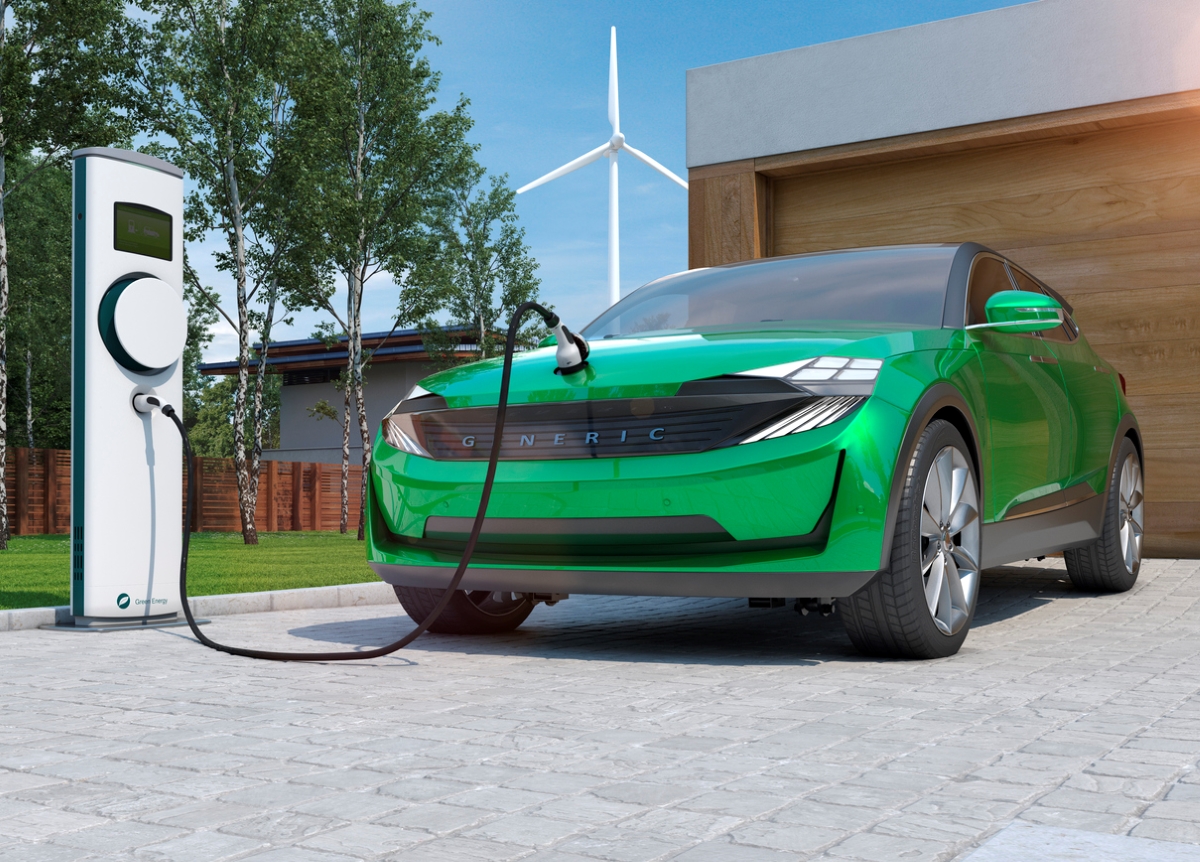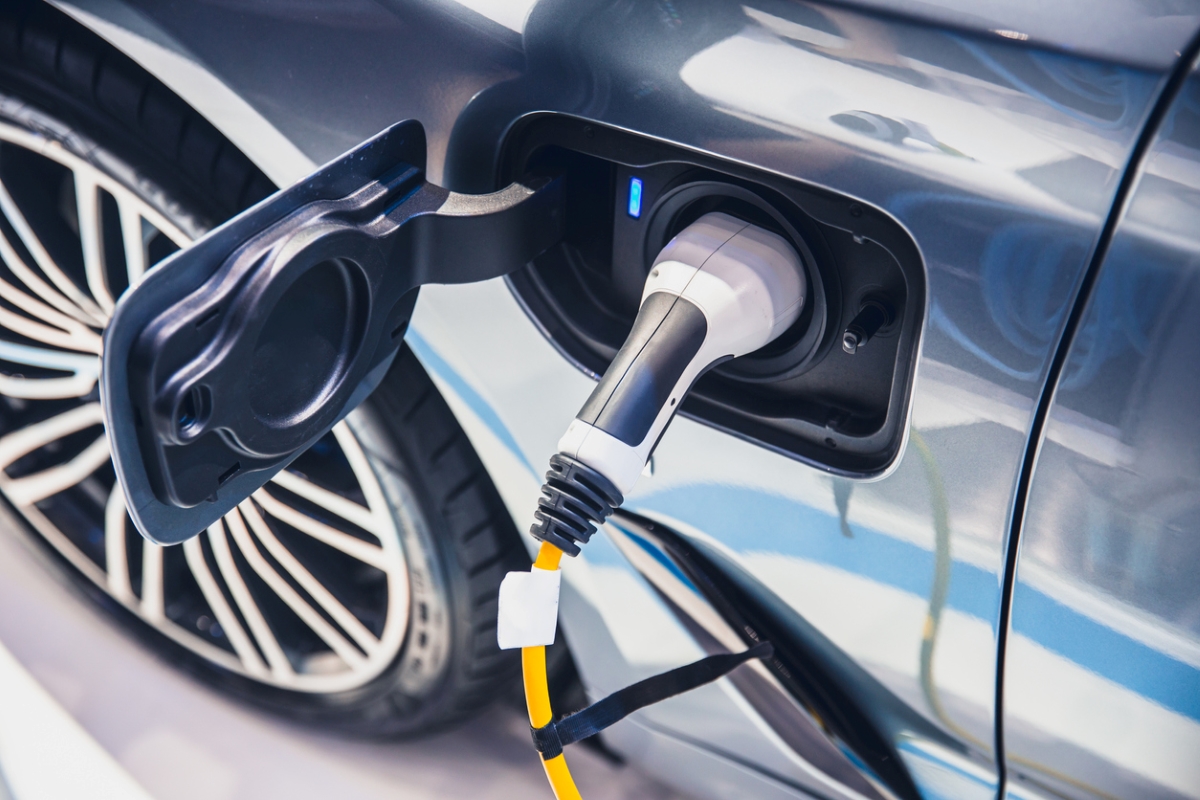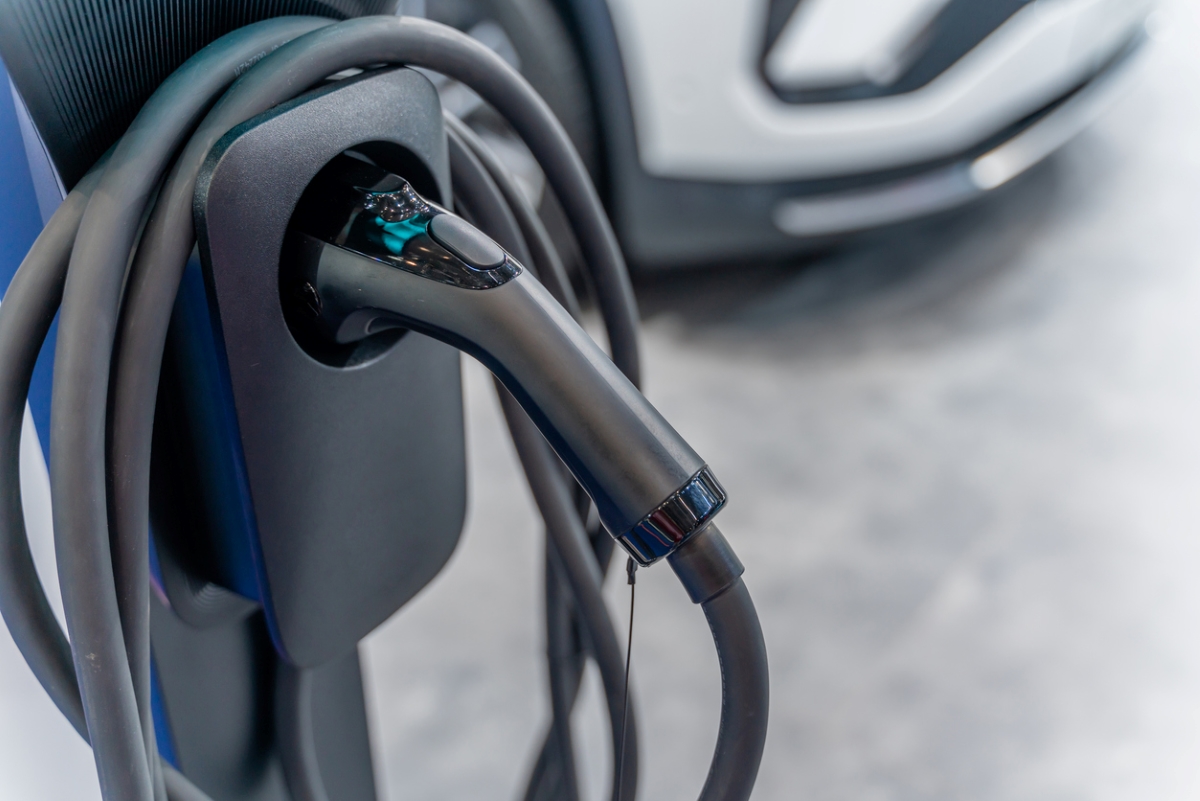

We may earn revenue from the products available on this page and participate in affiliate programs. Learn More ›
The most significant change in transportation since we took horses off the streets is upon us. Are you ready? An electric car sounds good in theory—great for the environment, no more paying for costly gas, and the ability to charge your car from your home. But there’s more to charging your car than charging your phone. If you’re wondering exactly how to prepare for ownership of your new electric car and lack the tech credentials of Elon Musk, you’re not alone. We’ll break down all the essential things you need to know. But first, a recap on what an EV is and what it isn’t.
The Difference Between an Electric Car and a Gas-Powered Car

To state the obvious, EVs run on electricity, which charges the battery that runs the car. An internal combustion engine (ICE) uses gasoline stored in the gas tank to power the car. An electric car is much cheaper to run than an ICE car because of its better energy efficiency. According to a study by the University of Michigan, using only home charging, it will cost on average around a quarter of the price to run an EV as compared to an ICE.
EV Range and Charging Time
Although anxiety about how far an EV can go is common among potential EV owners, newer EV models can go as far as 400 miles on a single charge. However, if you’re not using a fast commercial EV charger, the time it takes to charge your car at home could be cumbersome, ranging up to 24 hours for a full charge. However, according to a report by the University of California Davis, most newer EVs can be charged overnight or during a work day and get you an average of 250 miles.
Less Maintenance for EVs
The good news is that a slew of mechanical components required for an ICE vehicle are not needed in an EV, decreasing the maintenance costs. For example, fuel filters, cooling system flushes, transmission servicing, spark plugs, drive belts, and oil changes are not required for EV cars. Estimates put annual maintenance costs for EVs at 30 to 40 percent lower than costs for ICE vehicle maintenance.
An EV isn’t entirely maintenance-free. Brake pads, washer fluid, and tire pressure must be checked and serviced regularly, as with an ICE. While some potential owners fear the cost of replacing an EV battery, today’s batteries are manufactured to last the lifetime of the vehicle, and battery warranties are available to offset any unexpected cost.
RELATED: The Best Multimeters, Tested and Reviewed
Charging Options With or Without a Garage

You can charge your EV from a garage, driveway, or parking area with access to an outlet, but it will be slow. If you want the fastest and most convenient charging, you’ll need more powerful charging capabilities. There are currently two types of residential chargers to choose from, Level 1 and Level 2.
- Level 1: A Level 1 EV charger delivers a charge at 110 to 120 volts, which is compatible with the three-prong plug of your wall outlet, and comes standard on all EVs. This is convenient if you plan to charge your EV from your home, as you won’t need to undertake any additional wiring. The downside is that if you need to go somewhere in a hurry, this is not your charger. Charging your car can take up 40 hours for some older model EVs. Don’t be tempted to use an extension cord with these chargers either. EVs pull more electricity than a standard household appliance, and using a standard extension cord could damage your home and car. The same goes for multi-outlet power strips, splitters, grounding adaptors, surge protectors, or similar devices. Plug your vehicle charger directly into the outlet.
- Level 2: As the name implies, these are faster and more powerful than Level 1 chargers, delivering 220 to 240 volts of charge. They’ll save you from having to plug your car in twice a day, but you’ll need to use a higher voltage plug like you’d use for your dryer or refrigerator. Alternatively, a qualified electrician with access to your electrical panel box can hardwire a Level 2 charger in your home. Either way, you always need to check with your utility company before using a Level 2 charger to make sure your electrical panel can handle a charging station. Level 2 chargers come in wall-mounted or portable models and cost anywhere from $200 to $1000, not including installation.
For apartment dwellers or others without a garage, look for a portable outdoor charger that’s weatherproof and has enough cable length to reach the nearest outlet. Wireless charging pads are planned for future vehicles, so cables won’t even be a consideration for some models.
When you’re in public, you have access to the fastest type of charging, Level 3, also called DC charging. While not available for residential use, public and commercial charging stations can give you 250 miles of added range in under an hour of charging.
RELATED: 14 Secrets of People with Low Energy Bills
Saving Money on Charging

Fortunately, there are some federal and state incentives available to help cover the cost of a home charger.
Many chargers are compatible with Amazon Alexa and Google Assistant, so they can be pre-programmed and even timed with the lowest electricity rates to save you money.
To ease the transition to EVs, some automakers offer free charging deals for a period of time after purchase at commercial DC charging stations, such as Electrify America and EVgo. This is especially helpful for residents of apartment buildings or condos, where electrical upgrades or convenient access to charging facilities are not immediately possible.
A warning: Homeowners with mechanical experience working on ICEs but not electric vehicles should stay away from the components of an EV, as they are two very different animals. Unless you’re an experienced electrician, it’s best to leave the maintenance of your EV to professionals and simply enjoy the ride.
